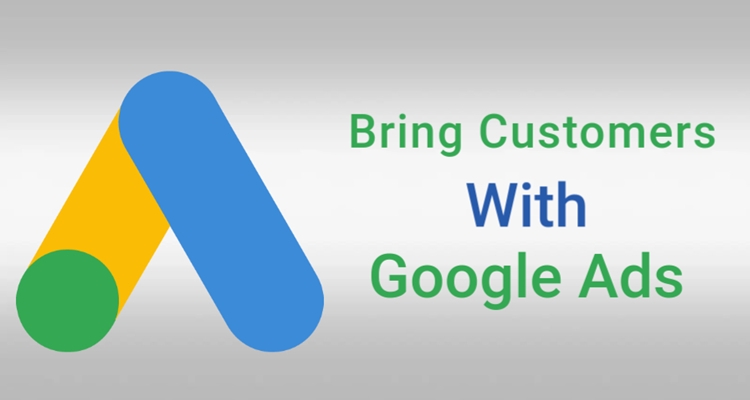
7 Proven Strategies to Bring Customers with Google Ads
How to Bring Customers with Google Ads
It is more important than ever to draw clients online in the current digital environment. Google Ads gives companies a potent approach to reach their target audience, since billions of searches occur every day. This tutorial will show you how to utilize Google Ads to successfully attract clients to your company.
Understanding Google Ads
Businesses may place advertisements on Google’s search engine results pages (SERPs) and on its extensive network of partner websites by using Google Ads, an online advertising platform. Businesses may increase their exposure right away and draw in clients who are actively looking for comparable goods or services by utilizing Google Ads.
Why Make Use of Google Ads?
- Targeted Reach: To make sure your advertisements are seen by the appropriate people, Google advertisements lets you target particular keywords, demographics, and geographic areas.
- Cost control: You determine your spending limit and only pay when an ad is clicked (PPC stands for pay per click). Controlling your advertising expenses is much simpler as a result.
- Measurable Outcomes: Google Ads offers comprehensive statistics that let you monitor the effectiveness of your campaign and make informed decisions.
- Different Types of Ad Formats: You may select the format that best fits your company’s objectives, whether it’s text advertisements, display ads, shopping ads, or video ads.
Creating an Account on Google Ads
- Make an account: Sign up with your Google account on the Google Ads page. To create your account, adhere to the instructions.
- Establish Your Objectives: Make sure your goals are clear before you start your first campaign. Are you trying to improve website traffic, sales, or lead generation? Your campaign approach will be guided by well-defined goals.
- Recognize Your Audience: Do some research on your intended audience. Who are they? What fascinates them? Knowing your target enables you to customize your advertisements to suit their requirements.
Research and Selection of Keywords
The foundation of every effective Google Ads campaign is keywords. These are the search phrases used by prospective clients to look for goods or services.
Employ Keyword Research Tools: You may find pertinent keywords for your company with the use of tools such as Ahrefs, SEMrush, and Google Keyword Planner. Seek out terms with a lot of searches and little competition.
Pay Attention to Long-Tail Keywords: More specialized phrases with often less competition are known as long-tail keywords. Despite having fewer searches, they frequently generate higher qualified leads, which improves conversion rates. For instance, you may target “women’s running shoes in Mumbai” rather than “shoes.”
Keyword Grouping by Theme: Sort your keywords into categories that are closely related to one another. This aids in producing pertinent advertisements and landing sites that resonate with users’ search intent.
Creating Powerful Advertisements
Making compelling advertisements is essential to drawing in viewers and promoting clicks.
- Google Ads provides a number of ad formats, such as:
- Text Ads: Basic advertisements that include a URL, headline, and description.
- Visual advertisements that show up on websites that are part of the Google Display Network are called display advertising.
- Ads that appear before or during YouTube videos are known as video ads.
- Shopping ads are advertisements that display items together with pricing, pictures, and shop names.
- Creating Powerful Advertising Copy:
- Engaging Headlines: Write catchy headlines that draw attention to the primary advantage of your offering.
- Clear Descriptions: Include more information and an attention-grabbing call to action (CTA) in the description section to entice readers to click.
- Use Keywords: To raise your ad copy’s relevancy and quality ratings, use pertinent keywords.
- Utilize Ad Extensions: Ad extensions enhance your ads by providing additional information.
- Site Link Extensions: Links to specific pages on your website.
- Call Extensions: A phone number that users can click to call you directly.
- Location Extensions: Your business address to help users find you.
Targeting Your Audience
One of the key advantages of Google Ads is its robust targeting options.
- Geographic Targeting: If your business serves a specific area, set your campaigns to target users in those locations. This ensures your ads reach local customers who are more likely to convert.
- Demographic Targeting: You can target users based on age, gender, and interests. Tailor your ads to appeal to your ideal customer demographic.
- Remarketing: Use remarketing to re-engage users who have previously visited your website.
Budgeting and Bidding Strategies
Setting a budget and choosing a bidding strategy are crucial steps in managing your Google Ads campaigns.
- Set Your Budget: Decide how much you want to spend daily or monthly. Start small, then scale up as you see positive results.
- Bidding Strategies:
- Manual Bidding: Set your own maximum cost-per-click (CPC) for each keyword.
- Automated Bidding: Allow Google to manage your bids to achieve your desired goals, such as maximizing clicks or conversions.
Examining and Improving Your Advertising
The secret to success once your campaigns go live is constant tweaking and monitoring.
- Track Key data: Keep an eye on crucial data like as cost per conversion, conversion rate, and click-through rate (CTR). These indicators provide you insight into the effectiveness of your marketing.
- A/B testing: To determine what works best, experiment with various ad copy, keywords, and targeting settings. A/B testing may greatly enhance the effectiveness of your campaign.
- Optimize Frequently: Make changes to your targeting methods, ad text, and keywords based on the data gathered. Over time, improving your campaigns will help you get better outcomes.

